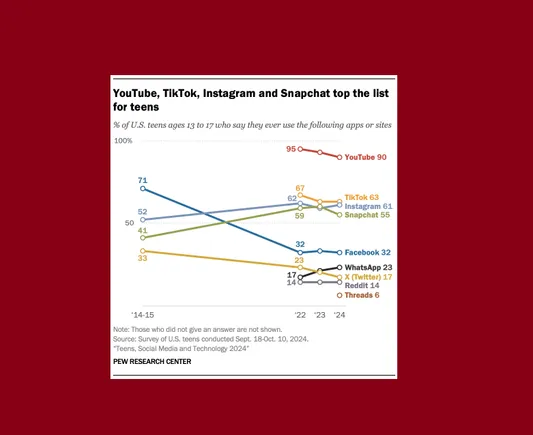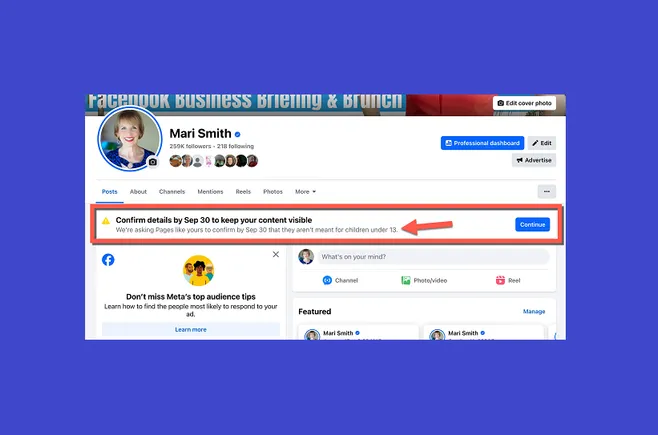# New Report Supplies Perception into Teen Social Media Use

As Governments world wide think about new measures to restrict teenagers’ use of social apps, the newest stats from Pew Analysis on teen social media use come at a very fascinating time, in showcasing the place teenagers are paying consideration, and the way a lot time they really are spending in social apps.
Based mostly on a survey of 1,391 U.S. teenagers aged 13 to 17, in addition to every of their mother and father, the report offers a snapshot of the place teenagers are partaking, and which apps are the important thing focus for this cohort.
And it’ll come as no shock to search out that YouTube stays the chief within the area.

As you’ll be able to see, YouTube has declined barely since Pew’s final survey, although it was nonetheless flagged by 90% of members as an app that they use recurrently.
YouTube is taken into account much less of a social app and extra a video platform, because it doesn’t give attention to the social parts as a lot (apparently, YouTube has been excluded from Australia’s new social media ban for teenagers beneath 16). However it’s nonetheless technically a social app, and its affect stays big, driving cultural tendencies amongst younger audiences.
Instagram and WhatsApp are the one apps which have seen an increase in utilization since Pew’s final teen report, although TikTok, Instagram, and Snapchat stay the important thing social apps that teenagers use to remain linked.
As per Pew:
“Roughly six-in-ten teenagers say they use TikTok and Instagram, and 55% say the identical for Snapchat.”
That’s just about what most would anticipate, with these apps remaining “the massive three” for teenagers for a while, whereas each Fb and X (previously Twitter) have declined considerably over the previous decade with this group.
“Immediately, 32% of teenagers say they use Fb. That is down from 71% in 2014-15, although the share of teenagers who use the location has remained secure lately. And 17% of teenagers say they use X (previously Twitter) – about half the share who mentioned this a decade in the past (33%), and down from 23% in 2022.”
Each Fb and X, that are actually the O.G.’s of the social area, have change into extra targeted on engagement amongst older customers, and have misplaced their youth attraction to a major diploma. So if you happen to’re trying to attain teenagers, most likely don’t go advertising in these apps.
Although the actual knowledge of curiosity on this report is probably going how a lot time teenagers spend in every app:

As you’ll be able to see on this overview, YouTube and TikTok are the platforms that teenagers are most probably to spend probably the most time on.
“Total, 73% of teenagers say they go on YouTube each day, making YouTube probably the most broadly used and visited platform we requested about. This share contains 15% who describe their use as “nearly fixed.” About six-in-ten go to TikTok each day. This contains 16% who report being on it nearly continuously.”
“Virtually continuously” is a regarding allocation, however that is how Pew has characterised these persistent customers, who’re just about all the time lively in social apps.
Based mostly on this, it is YouTube and TikTok that may arguably be probably the most problematic for teen social media use, if the argument is that social media is overly dangerous for teenagers (professional opinions differ on this). But, Instagram and Snapchat are inclined to get extra focus on this respect, with Instagram, specifically, singled out as inflicting psychological well being impacts amongst younger ladies by numerous reviews.
The info right here means that each YouTube and TikTok are much more addictive, and arguably extra influential on impressionable minds.
Although general, extra teenagers are spending extra time on-line:

When it comes to gender splits, the information exhibits that teen ladies are extra doubtless than boys to say they use TikTok nearly continuously, whereas boys are extra doubtless than ladies to make use of YouTube.

As you’ll be able to see, the gender splits for different apps are far more aligned, which is one other consideration for advertising spend.
Pew’s full report contains additional data on utilization amongst completely different demographics, together with ethnicity-specific utilization and family earnings knowledge.
Some useful insights for anybody trying to attain teenagers on-line.
You may take a look at the total report right here.
Andrew Hutchinson




